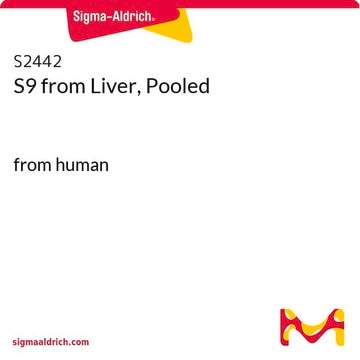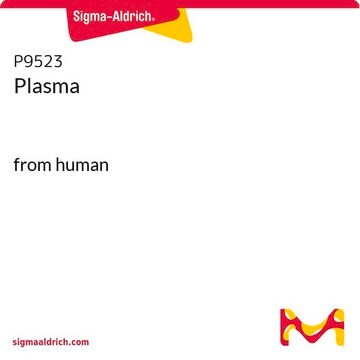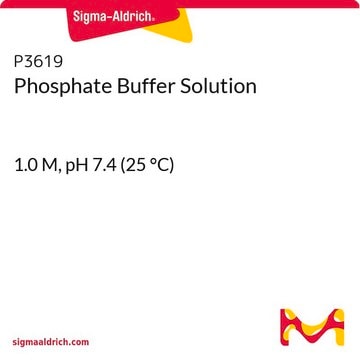M9441
Microsomes from Liver, Pooled
from mouse(CD-1), male
Sign Into View Organizational & Contract Pricing
All Photos(1)
About This Item
UNSPSC Code:
12161501
NACRES:
NA.47
Recommended Products
biological source
mouse (CD-1)
Quality Level
form
liquid
packaging
vial of ~10 mg
UniProt accession no.
shipped in
dry ice
storage temp.
−70°C
Gene Information
mouse ... Mgst1(56615)
Looking for similar products? Visit Product Comparison Guide
General description
Microsomes are the fraction of "submicroscopic” particles isolated from homogenates of liver and other tissues. Microsomes are rich in ribonucleic acid (RNA).
Application
Microsomes from Liver, Pooled has been also been used to study the metabolic stability of antitumor agents and tunicamycin.
Microsomes from Liver, Pooled has been used in cell survival and mutation assays in Escherichia coli.
Biochem/physiol Actions
Liver microsomes are subcellular particles derived from the endoplasmic reticulum of hepatic cells. These microsomes are a rich source of drug metabolizing enzymes, including cytochrome P-450. Microsome pools from various sources are useful in the study of xenobiotic metabolism and drug interactions.
Microsomes might act as cell organelles and are actively involved in protein synthesis. Carbon monoxide-binding pigment of microsomes, named P-450, is an integral element of mixed function oxidase systems involved in the oxidative demethylation and hydroxylation of drugs and steroids. Murine liver microsomes plays a crucial role in degradation of small antimicrobial β2,2-amino acid derivatives.
Storage Class
10 - Combustible liquids
wgk_germany
WGK 3
flash_point_f
Not applicable
flash_point_c
Not applicable
Certificates of Analysis (COA)
Search for Certificates of Analysis (COA) by entering the products Lot/Batch Number. Lot and Batch Numbers can be found on a product’s label following the words ‘Lot’ or ‘Batch’.
Already Own This Product?
Find documentation for the products that you have recently purchased in the Document Library.
Customers Also Viewed
AQ-4, a deuterium-containing molecule, acts as a microtubule-targeting agent for cancer treatment
Lin BY, et al.
European Journal of Pharmacology, 173093-173093 (2020)
T Vu Nguyen et al.
ChemMedChem, 14(9), 927-937 (2019-03-06)
Tuberculosis (TB) remains a significant global health problem for which new therapeutic options are sorely needed. The ability of the causative agent, Mycobacterium tuberculosis, to reside within host macrophages and form biofilm-like communities contributes to the persistent and drug-tolerant nature
Structures of DPAGT1 explain glycosylation disease mechanisms and advance TB antibiotic design
Dong YY, et al.
Cell, 175(4), 1045-1058 (2018)
Mikhail Krasavin et al.
European journal of medicinal chemistry, 127, 357-368 (2017-01-12)
A series of spirocyclic compounds inspired by Eli Lilly's phase 1 antidiabetic FFA1 receptor agonist LY2881835 was designed to include polar aromatic periphery groups and explore a possibility of building additional contacts with the target near the agonist binding site.
Role of hemoprotein P-450 in fatty acid omega-hydroxylation in a soluble enzyme system from liver microsomes.
Lu AY and Coon MJ
The Journal of Biological Chemistry, 243(6), 1331-1332 (1968)
Our team of scientists has experience in all areas of research including Life Science, Material Science, Chemical Synthesis, Chromatography, Analytical and many others.
Contact Technical Service








